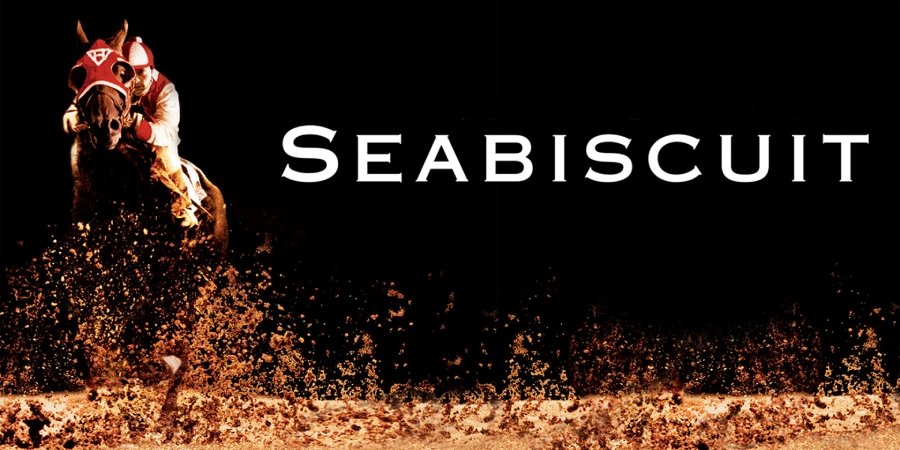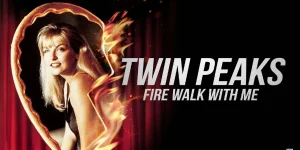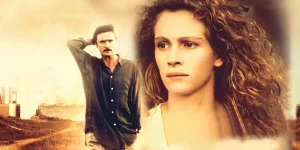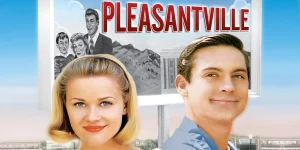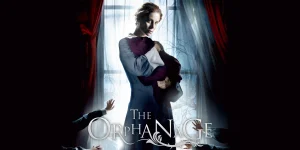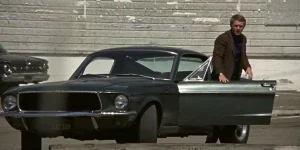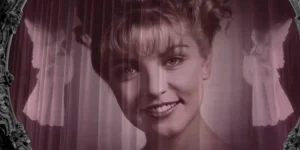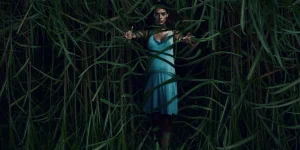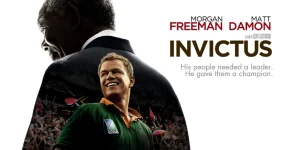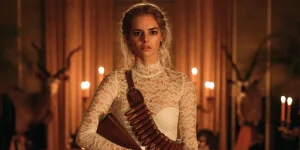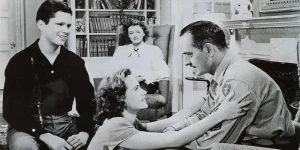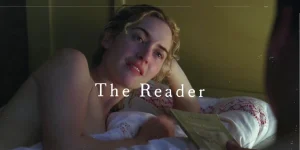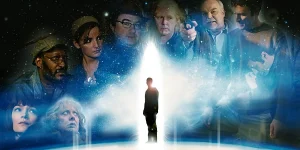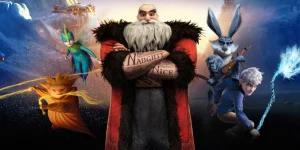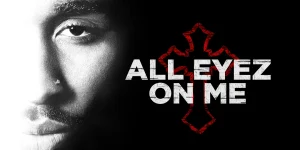Seabiscuit (2003), directed by Gary Ross, is a stirring and inspirational drama based on the true story of an undersized racehorse that captivated America during the Great Depression. Based on Laura Hillenbrand’s bestselling non-fiction book Seabiscuit: An American Legend, the film is as much about resilience and redemption as it is about racing. Featuring a stellar cast and rich historical context, it remains one of the most acclaimed sports dramas of the early 2000s.
Table of Contents
ToggleDetailed Summary
Setting the Stage: America in the Great Depression
The film opens in the 1920s and early 1930s, painting a vivid picture of a nation on its knees due to economic collapse. The lives of three men—Charles Howard, a wealthy bicycle magnate turned car dealer; Tom Smith, a quiet and intuitive horse trainer; and Red Pollard, a partially blind and struggling jockey—become intertwined through a beaten-down, misunderstood horse: Seabiscuit.
The Misfit Team
Charles Howard (Jeff Bridges), grieving the loss of his son, is seeking meaning and hope. Tom Smith (Chris Cooper), seen as a relic from the past with his unconventional methods, finds in Seabiscuit a kindred spirit: a horse that’s been misused and underestimated. Red Pollard (Tobey Maguire), orphaned and nearly blind in one eye, carries his own emotional scars. Together, they form an unlikely team trying to do the impossible—turn Seabiscuit into a champion.
Seabiscuit’s Rise
Initially dismissed as lazy and too small, Seabiscuit starts to defy expectations. With Tom’s patient training and Red’s bond with the horse, Seabiscuit begins to win. His rise through the ranks mirrors the hope of a downtrodden nation looking for a symbol of grit and comeback. Seabiscuit becomes a sensation, drawing enormous crowds and media attention.
The Rivalry: Seabiscuit vs. War Admiral
The dramatic tension heightens with the announcement of a match race between Seabiscuit and War Admiral, the reigning Triple Crown winner. This was no ordinary race—it was a clash of styles, backgrounds, and narratives. Seabiscuit represents the underdog spirit; War Admiral, the aristocratic favorite.
Before the race, Red is injured and cannot ride. In his place, George Woolf (played by real-life jockey Gary Stevens) takes the reins. Despite the switch, Tom and George use Red’s strategy: to take the early lead and then let War Admiral catch up, then re-engage and pull ahead.
The race at Pimlico is the centerpiece of the film, shot with sweeping cinematography and razor-sharp editing. Seabiscuit wins, not just by speed, but by outthinking and outlasting his opponent. It’s a defining moment in American sports history.
Movie Ending
The film doesn’t end with the War Admiral victory—it goes further. Red Pollard eventually recovers from his leg injuries (despite doctors’ warnings) and returns to race. Seabiscuit, too, suffers a near career-ending injury. Their dual recovery becomes the emotional crux of the film.
In the climactic race, Seabiscuit runs again with Red aboard, against all odds. The track is muddy, and the stakes are high. As the race unfolds, Seabiscuit falls behind but gradually accelerates. Red, knowing the horse better than anyone, doesn’t push him early. They pull ahead in the final stretch, clinching victory.
The ending ties back to the theme: it wasn’t just the horse that was broken and came back—it was all of them. The final scenes show Howard, Smith, and Pollard together, not just winning a race, but reclaiming their lives.
The film closes with Red’s narration, acknowledging that Seabiscuit gave them something to believe in when they needed it most. There’s a beautiful stillness in the final shot as we see the characters not in triumph, but in peace.
Are There Post-Credits Scenes?
No, Seabiscuit does not feature any post-credits scenes. Once the credits roll, the story has fully concluded.
Type of Movie
Seabiscuit is a biographical sports drama. It blends elements of historical fiction, character-driven drama, and inspirational storytelling rooted in true events.
Cast
- Tobey Maguire as Red Pollard
- Jeff Bridges as Charles Howard
- Chris Cooper as Tom Smith
- Elizabeth Banks as Marcela Howard
- Gary Stevens as George Woolf
- William H. Macy as Tick-Tock McGlaughlin (the flamboyant radio announcer)
- Eddie Jones as Samuel Riddle (owner of War Admiral)
Film Music and Composer
The score is composed by Randy Newman, known for his emotionally evocative and Americana-infused music. The soundtrack balances grandeur with intimacy, mirroring the film’s themes of hope and struggle. Newman’s score was nominated for an Academy Award.
Filming Locations
- Kentucky and California were primary filming locations for the racing scenes.
- Many scenes were shot at Santa Anita Park, a historic racetrack that adds authenticity.
- The rural scenes were filmed in Northern California and Virginia, echoing the pastoral landscapes of 1930s America.
- These locations were chosen not just for aesthetics, but for historical resonance—they were active venues during Seabiscuit’s real racing days.
Awards and Nominations
- Nominated for 7 Academy Awards, including:
- Best Picture
- Best Adapted Screenplay
- Best Supporting Actor (Chris Cooper)
- Best Cinematography
- Best Art Direction
- Best Sound Mixing
- Best Score (Randy Newman)
- Won several critics’ awards and audience accolades.
- Though it didn’t win an Oscar, the film was a major critical and box office success.
Behind the Scenes Insights
- Tobey Maguire was an experienced rider before the film but still trained extensively for authenticity.
- Chris Cooper spent months with real horse trainers to embody Tom Smith’s quiet intensity.
- Real-life jockey Gary Stevens played George Woolf, adding realism to the racing scenes.
- The filmmakers used actual Depression-era film stock for flashback scenes.
- Horse racing scenes were carefully choreographed with expert stunt riders and multiple camera rigs, some mounted on cars and drones.
Inspirations and References
- Based on the book Seabiscuit: An American Legend by Laura Hillenbrand, which itself was praised for its depth of research and storytelling.
- The film stays close to the source material, though some timelines and events are condensed for cinematic flow.
- Seabiscuit’s story is a symbol of resilience during the Great Depression and became a national morale booster.
Alternate Endings and Deleted Scenes
- A few scenes involving deeper character backstories (especially Red’s boxing life) were cut.
- Early drafts had more voiceover narration but were trimmed to focus more on visual storytelling.
- No significant alternate endings have been publicly revealed, as the film aimed to stick closely to real events.
Book Adaptations and Differences
- The book delves more into the economic and cultural background of the 1930s.
- The film streamlines some events for clarity—particularly the timelines of races and injuries.
- Red Pollard’s troubled childhood and boxing career are more detailed in the book.
- The film makes Seabiscuit’s injury and recovery more dramatic than in real life, emphasizing its metaphorical weight.
Memorable Scenes and Quotes
Key Scenes
- Red taming Seabiscuit in the stables, a pivotal bonding moment.
- The first major win where Seabiscuit silences critics.
- The War Admiral match race—a masterclass in pacing and tension.
- Seabiscuit’s final comeback race with Red returning to ride.
Iconic Quotes
- “He just needs to learn how to be a horse again.” – Tom Smith
- “You don’t throw a whole life away just because it’s banged up a little.” – Tom Smith
- “You know, everybody thinks we found this broken-down horse and fixed him. But we didn’t. He fixed us. Every one of us. And I guess in a way, we kinda fixed each other too.” – Red Pollard
Easter Eggs and Hidden Details
- Real radio clips from the 1930s are used throughout the film for authenticity.
- Several of the horses used in the movie were descendants of the real Seabiscuit.
- During the race with War Admiral, the camera slows to show Red’s strategy—a nod to actual racing tactics used at the time.
- The announcer’s eccentric style is modeled after real-life sportscasters of the Depression era.
Trivia
- The film used over 40 different horses to portray Seabiscuit at various stages.
- The movie was a box office hit, earning over $148 million worldwide.
- The real Seabiscuit became the top money-winning horse of his time.
- Elizabeth Banks landed the role of Marcela Howard after impressing Ross in auditions—this was one of her breakout roles.
Why Watch?
Watch Seabiscuit if you want a powerful, character-driven sports drama that transcends racing. It’s about hope, healing, and second chances. With stellar performances, lush cinematography, and a heartwarming true story, it’s more than a film—it’s a slice of American spirit.
Director’s Other Movies
- Pleasantville (1998)
- The Hunger Games (2012)
- Free State of Jones (2016)
- Ocean’s Eight (2018) – producer
Recommended Films for Fans
- Cinderella Man (2005)
- The Pursuit of Happyness (2006)
- The Horse Whisperer (1998)
- Secretariat (2010)
- Ferrari (2023)
- Rudy (1993)
- Million Dollar Baby (2004)
- Ford v Ferrari (2019)

